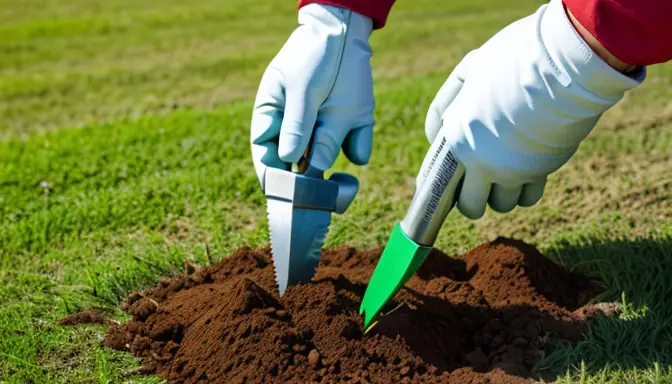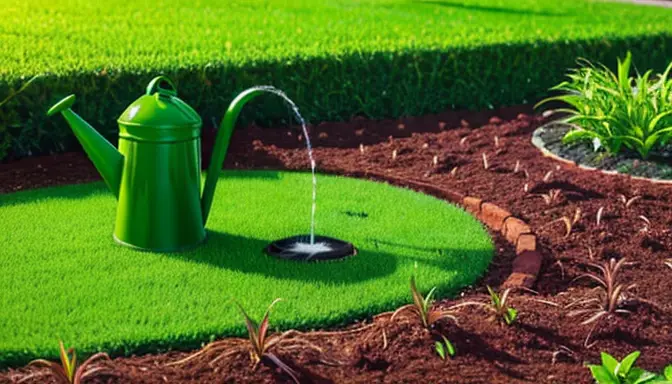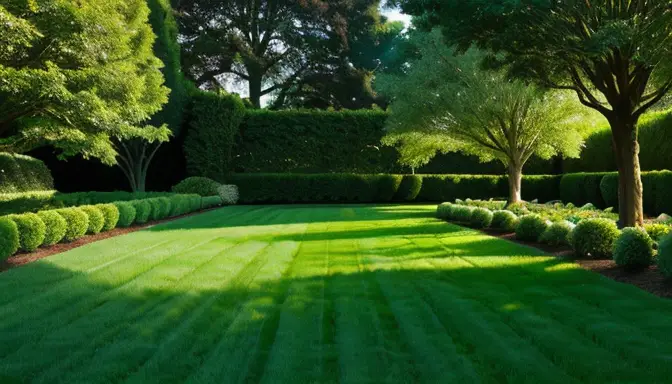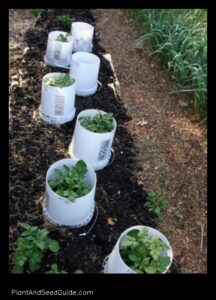Are you ready to transform your lawn into a lush paradise with Zoysia grass plugs? Let’s dive into the step-by-step guide that will help you achieve a vibrant and healthy turf that will make your neighbors green with envy!
First things first, choosing the right location is key. Consider the amount of sunlight the area receives, the quality of the soil, and how well it drains. These factors will determine the success of your Zoysia grass plugs’ growth and establishment.
Next, it’s time to prepare the soil for planting.
By amending the soil with organic matter like compost or peat moss, you can enhance its structure, fertility, and water retention capabilities.Testing the soil pH levels is crucial to create an optimal environment for Zoysia grass..
Now, let’s get our hands dirty and plant those Zoysia grass plugs! Follow the correct spacing, depth, and watering techniques to ensure the plugs take root and flourish into a beautiful turf that will make your yard the envy of the neighborhood.
Remember, proper watering and maintenance are essential for the continued health and growth of your Zoysia lawn. By understanding the watering needs, mowing tips, and general care practices, you can keep your lawn looking vibrant and beautiful year-round.
Choosing the Right Location
When it comes to choosing the right location for planting Zoysia grass plugs, there are several key factors to consider. Sunlight exposure plays a crucial role in the growth of Zoysia grass, so select an area in your yard that receives an adequate amount of sunlight throughout the day. Additionally, soil quality is paramount. Zoysia grass thrives in well-draining soil, so ensure that the chosen location has good drainage to prevent waterlogging, which can hinder the growth of the plugs.
To determine the best spot in your yard, assess the topography and look for areas that are level and free from obstructions.
By carefully considering these factors, you can create an optimal environment for the successful establishment and growth of Zoysia grass in your lawn.Avoid planting Zoysia grass plugs in low-lying areas that are prone to water accumulation, as this can lead to root rot and other issues..

Preparing the Soil
When it comes to preparing the soil for planting Zoysia grass plugs, attention to detail is key for ensuring successful growth and establishment. Before diving into the planting process, it’s essential to assess and enhance the soil quality to create an optimal environment for the plugs to thrive. Here are some crucial steps to follow:
- Testing Soil pH Levels: Understanding the pH levels of your soil is fundamental as Zoysia grass thrives in slightly acidic to neutral soil. Test the pH of your soil using a simple kit available at garden centers and make necessary adjustments to achieve the ideal pH range.
- Amending Soil with Organic Matter: To improve soil structure and fertility, consider adding organic matter such as compost or peat moss. These amendments not only enhance nutrient retention but also promote better water drainage, creating a healthy foundation for the Zoysia grass plugs.
By following these steps and ensuring your soil is well-prepared, you set the stage for successful growth and a vibrant Zoysia lawn that will be the envy of your neighborhood.
Testing Soil pH Levels
When it comes to planting Zoysia grass plugs, testing the soil pH levels is a crucial step in ensuring the successful growth of your turf.
Here are some key points to consider when testing soil pH levels:Understanding the acidity or alkalinity of your soil can greatly impact the health and development of the grass plugs..
- Use a soil testing kit or send a sample to a laboratory for analysis.
- Aim for a pH level between 6.0 and 7.0, which is ideal for Zoysia grass growth.
- If the pH is too low (acidic), consider adding lime to raise the pH level.
- For high pH levels (alkaline soil), sulfur can be added to lower the pH.
Amending Soil with Organic Matter
When it comes to for planting Zoysia grass plugs, you are setting the foundation for a healthy and thriving lawn. Organic matter, such as compost or peat moss, plays a crucial role in enhancing soil quality and providing essential nutrients for the grass plugs to grow strong. Here are some key steps to follow:
- Choose high-quality organic amendments that are well-aged and free from chemicals.
- Spread a layer of organic matter over the planting bed and mix it into the soil to improve fertility and structure.
- Organic amendments help the soil retain moisture, promoting healthy root development and overall growth of Zoysia grass plugs.
By incorporating organic matter into your soil, you are creating a nutrient-rich environment that will support the establishment and long-term success of your Zoysia lawn. Remember, healthy soil leads to vibrant and lush grass!
Planting Zoysia Grass Plugs
When it comes to planting Zoysia grass plugs, it’s crucial to follow a precise process to ensure their successful establishment and growth in your lawn. Here’s a step-by-step guide to help you plant Zoysia grass plugs correctly:
- Step 1: Prepare the Planting Bed
Before planting, make sure to prepare the soil bed properly. Remove any weeds or debris and loosen the soil to allow for good root penetration. - Step 2: Spacing the Plugs
Space the Zoysia grass plugs appropriately, typically about 6-12 inches apart. This spacing will allow the plugs to fill in and create a dense turf over time. - Step 3: Planting Depth
Dig a small hole for each plug, ensuring that the top of the root system is level with the soil surface. Avoid planting the plugs too deep, as this can hinder their growth. - Step 4: Watering Technique
After planting the plugs, water them thoroughly to help settle the soil around the roots. Keep the soil consistently moist but not waterlogged during the establishment period. - Step 5: Mulching
Consider mulching around the plugs to retain moisture and suppress weed growth. Organic mulches like shredded leaves or straw can be beneficial for Zoysia grass.

Watering and Maintenance
When it comes to watering and maintenance of your Zoysia grass plugs, consistency is key.
Zoysia grass requires less water compared to other grass types, but it’s important to establish a regular watering schedule, especially during the initial growth phase.Proper watering is crucial to ensure the health and growth of your new turf..
Here are some essential tips for watering and maintaining your Zoysia lawn:
- Watering: Water deeply but infrequently to encourage deep root growth. Aim to provide about 1 inch of water per week, either through rainfall or irrigation.
- Mowing: Maintain the proper mowing height for Zoysia grass, which is around 1 to 2 inches. Regular mowing will help promote denser growth and a healthier lawn.
- Fertilizing: Use a balanced fertilizer specifically formulated for Zoysia grass to provide essential nutrients for growth. Follow the recommended application rates for best results.
- Weed Control: Keep an eye out for weeds and promptly remove them to prevent competition for nutrients and space. Consider using herbicides safe for Zoysia grass if weed infestations occur.
- Aeration: Periodically aerate your Zoysia lawn to improve soil compaction and enhance root development. Aeration promotes better water and nutrient absorption for healthier grass.
Frequently Asked Questions
- Can Zoysia grass plugs be planted in shade?
While Zoysia grass prefers full sun, it can tolerate some shade. However, for optimal growth and health, it is recommended to plant Zoysia grass plugs in areas that receive at least 6 hours of sunlight per day.
- How often should Zoysia grass plugs be watered?
Water newly planted Zoysia grass plugs daily for the first two weeks, then gradually reduce watering frequency. Once established, water deeply but infrequently, allowing the soil to dry slightly between waterings.
- When is the best time to plant Zoysia grass plugs?
The best time to plant Zoysia grass plugs is during the spring or early summer when the soil is warm and the grass can establish before the onset of winter. Avoid planting in the fall when the grass may not have enough time to develop strong roots.
- Wild Rose Country: Exploring Untamed Beauty - July 15, 2024
- Wildflower Nursery Decor: Bringing Nature Indoors - July 15, 2024
- Young Sprout of Grass: Nurturing New Life - July 15, 2024








